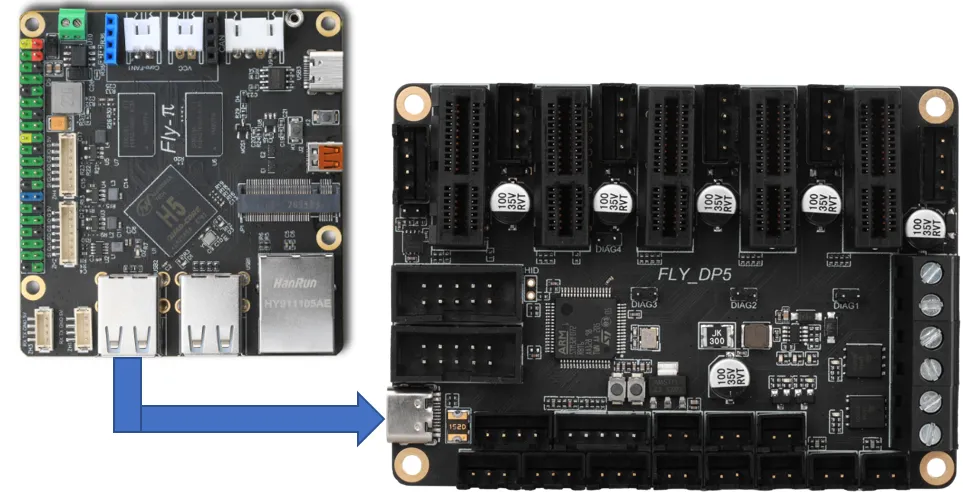Mainboard Wiring
Interface Diagram
Interface Description
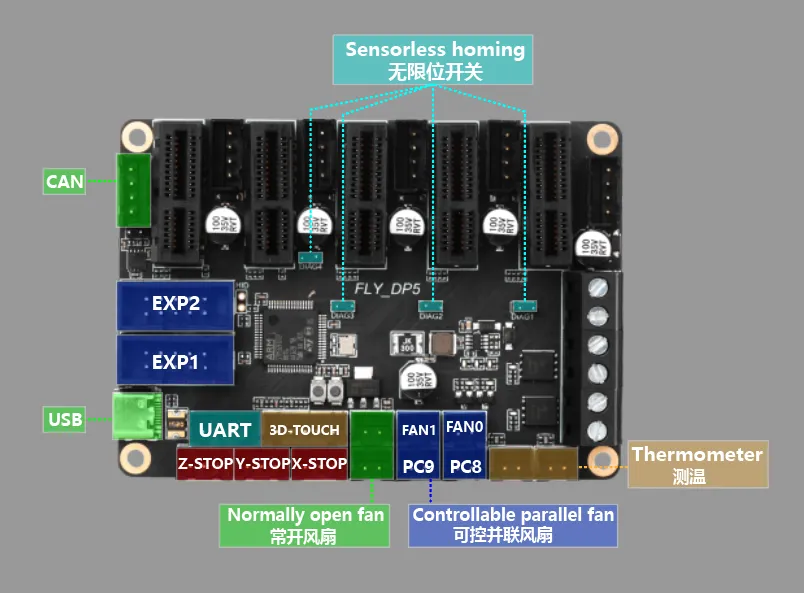
Pin Description

Power Wiring
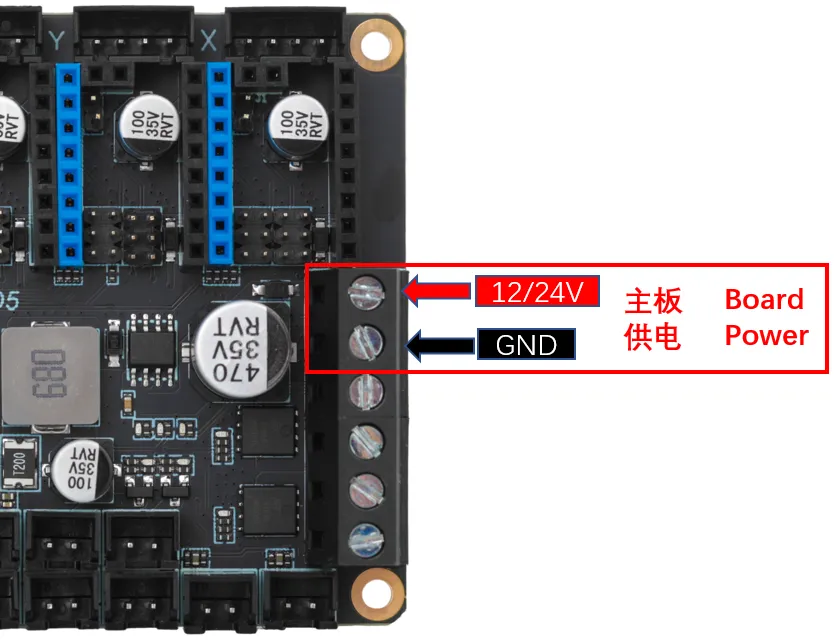
Driver Installation
Mainboard Driver Jumper
- DP5 does not require installation of driver jumper caps
Sensorless Endstops

Stepper Motor Wiring
- Regardless of the manufacturer of the two-phase stepper motor, its final appearance corresponds to 4 wires. No matter what color, black, white, green, yellow, etc., they all correspond to 4 wires. So we need to group the wires into two groups, A and B.
- For two-phase four-wire stepper motors, we don't need to know which is group A or group B; it's mainly about identifying one group, and the motor direction can be modified in the configuration.
-
The most commonly used stepper motor in 3D printers is the two-phase four-wire stepper motor, and its principle is shown in the figure below. There are two methods to identify the stepper motor wire sequence:
- Connect any two phase wires, and if you feel significant resistance when manually turning the motor shaft, then these two wires are a pair. Otherwise, they are not a pair, and you need to test other wires.
- Use a multimeter set to continuity mode to test any two phase wires of the stepper motor. If they are connected, they form a pair; otherwise, they do not form a pair, and you need to test other wires.
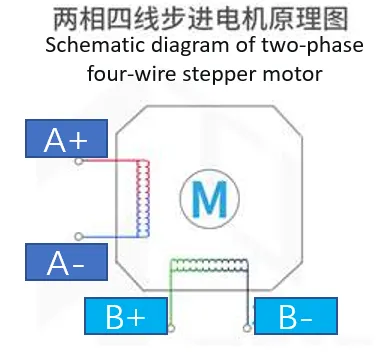
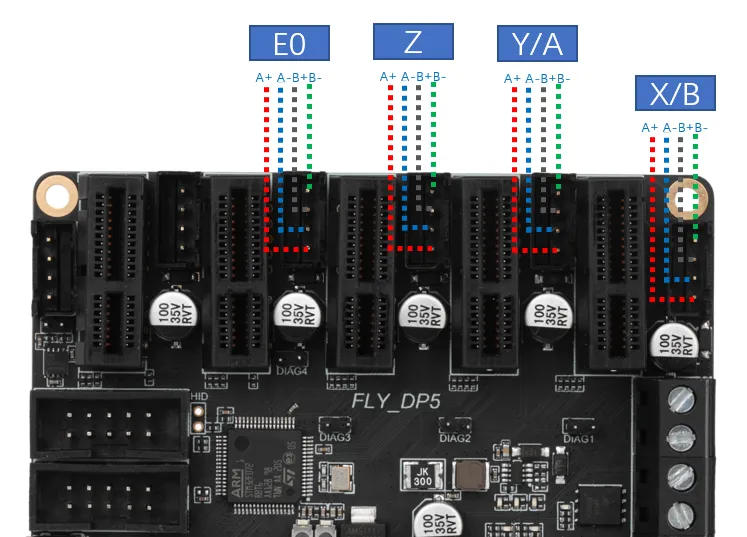
Heater Wiring

Bed Wiring
-
AC Bed: When wiring the solid-state relay, please pay attention not to connect the input and output incorrectly.
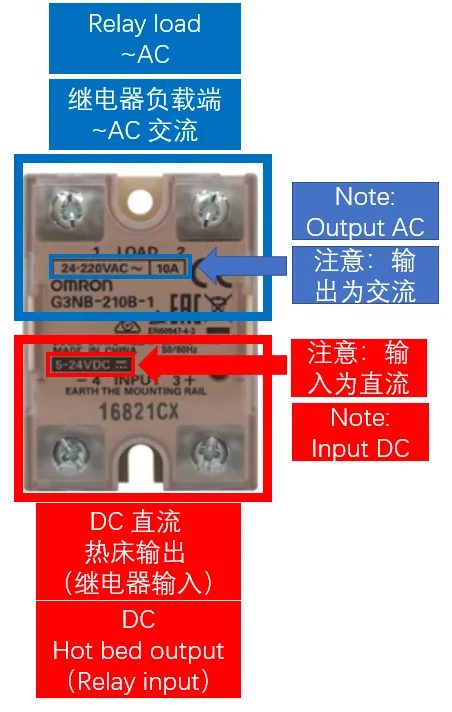
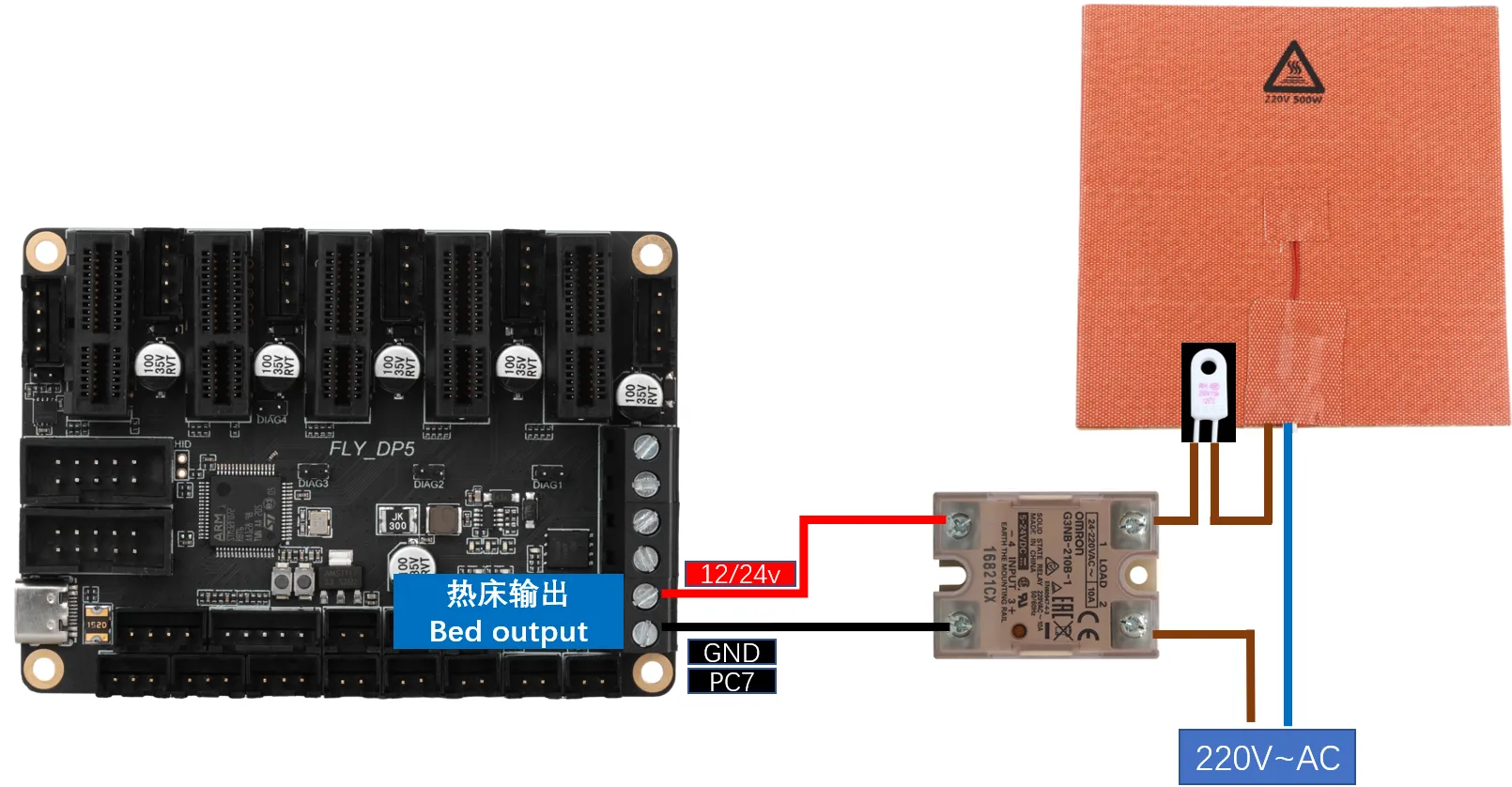
-
DC Bed: When connecting the onboard MOS to the DC bed, please note the power usage. The maximum current for the DC bed cannot exceed 10A. If it exceeds 10A, it is recommended to use an external MOS module to drive the bed; otherwise, it may cause irreversible damage to the mainboard.
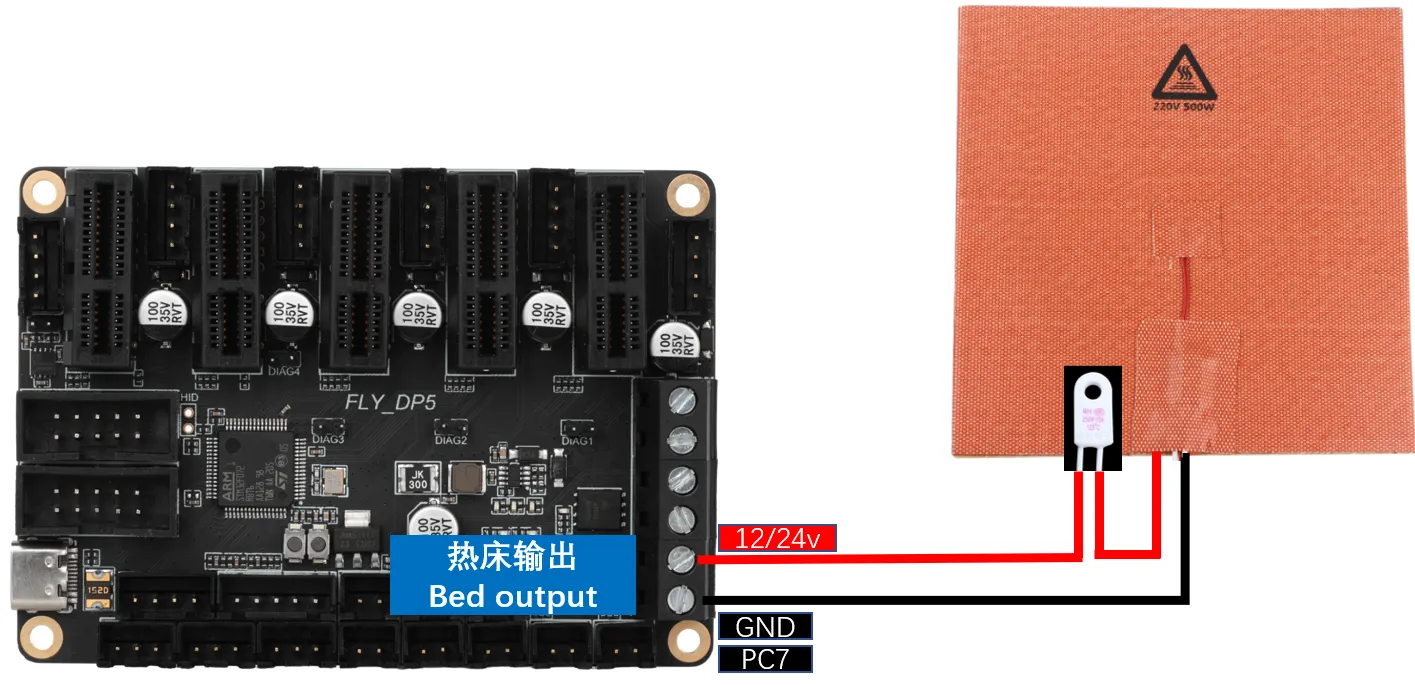
Thermistor Wiring
Thermistor Type Introduction
-
The thermistor wiring method is shown in the following figure. Please consult the purchasing merchant for the type of thermistor.
-
If purchased from fly (as shown in the figure below), please configure sensor_type as: ATC Semitec 104GT-2
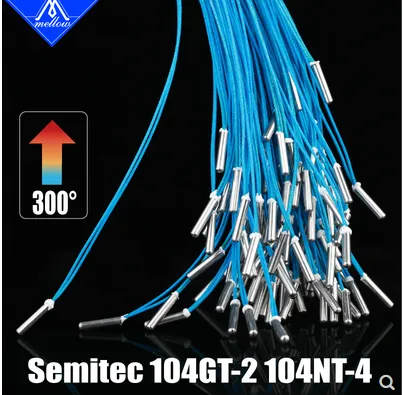
-
If using conventional NTC 100K (as shown in the figure below), please configure sensor_type as: Generic 3950

Mainboard Thermistor Wiring
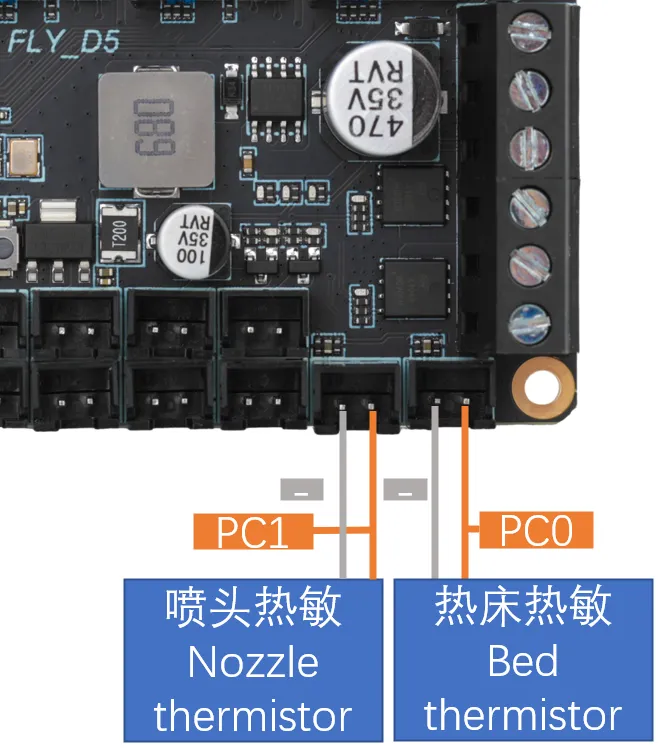
Fan Wiring
-
Fan Wiring
tipThe red boxed area in the figure below shows that the upper and lower interfaces are controlled by the same pin for controllable fans, i.e., one-to-two control.
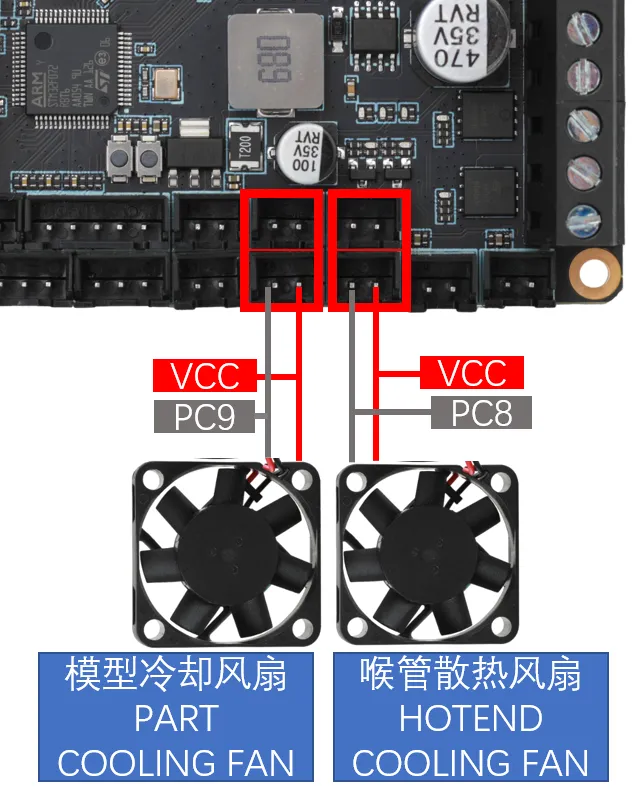
Limit Switch Wiring
-
Limit switches have normally open (NO) and normally closed (NC) types. In general, for 3D printers, it is recommended to use normally closed (NC) so that the system will report errors in case of problems with the limit switch circuit, avoiding unnecessary crashes and printer damage.
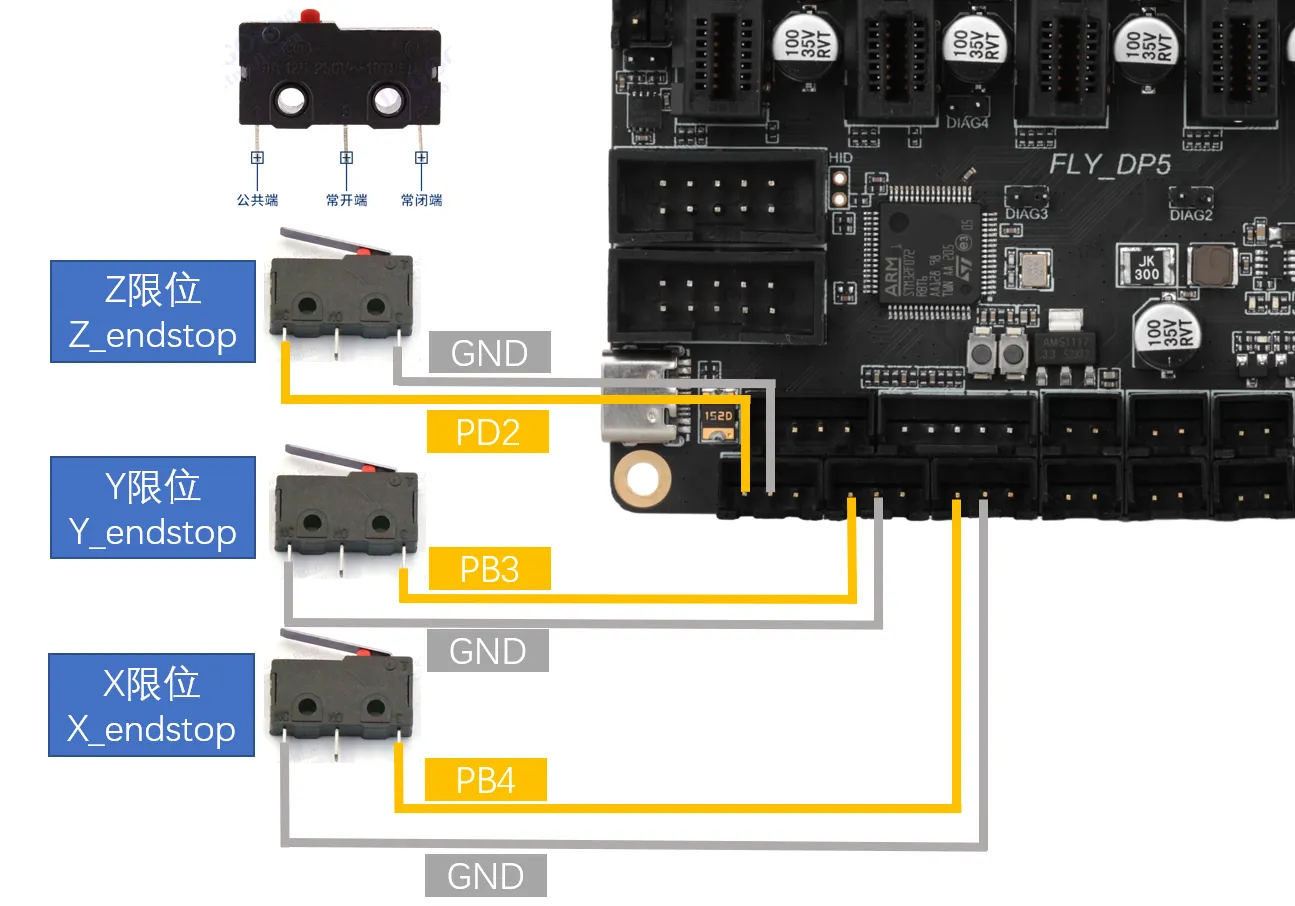
Leveling Sensor Wiring
Metal Proximity Switch Wiring
-
VORON officially recommends using the Omron Omron TL-Q5MC proximity sensor (the previous official recommendation was PL08N; both have the same principle but different detection distances) for bed leveling. The wiring method is shown in the figure below.

BL-Touch Wiring
- BL-Touch has five wires, three of which belong to the first group, responsible for sensor power supply and probe retraction/release. The second group consists of ground and signal lines, outputting limit signals. Please carefully check the wire sequence when wiring BL-Touch; incorrect wiring may permanently damage the sensor and motherboard!!!
! !!
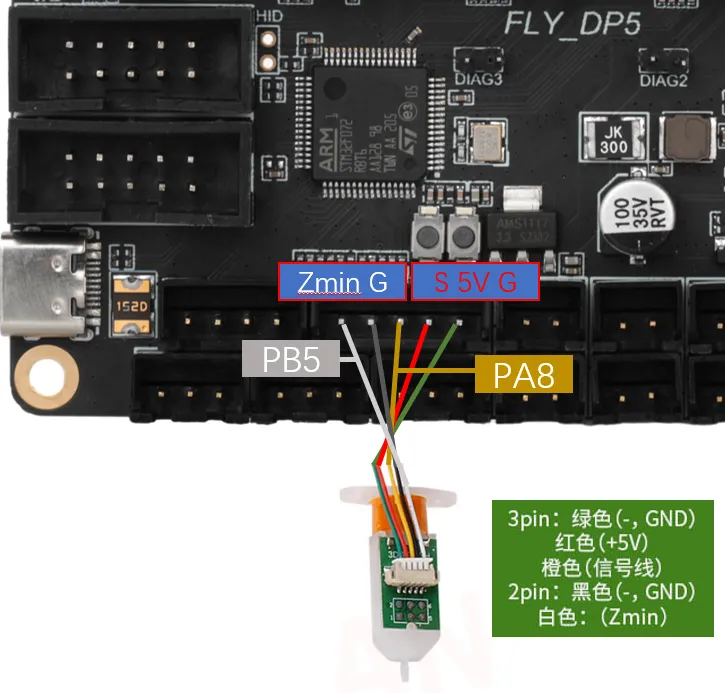
Klicky Wiring
-
Klicky is a third-party leveling sensor that can be made at home with very low cost, and it is stable in performance and cost-effective. It is recommended to use it. The wiring method is shown in the figure below.
-
Project address: jlas1/Klicky-Probe
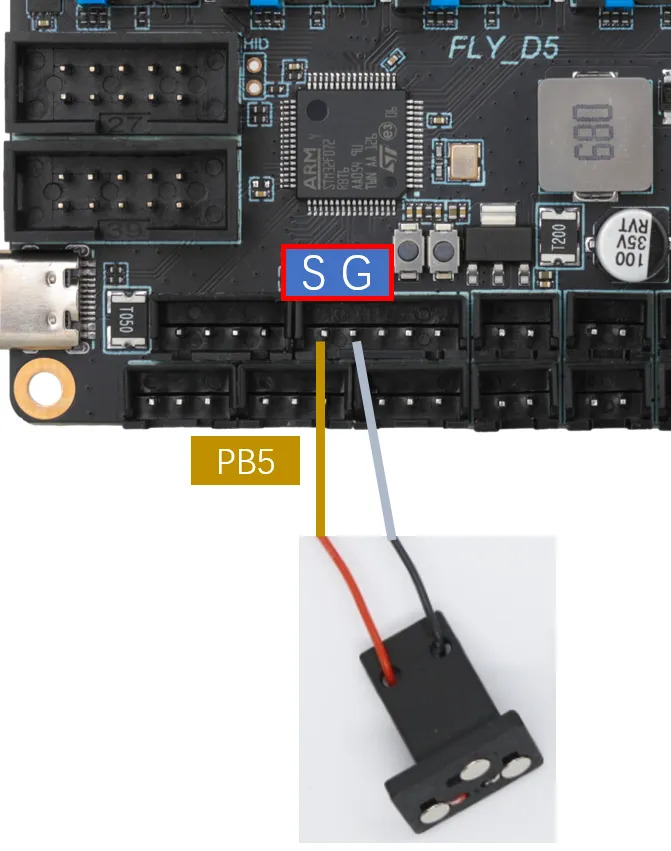
Voron Tap Wiring
-
Tap is a z-probe based on the nozzle, suitable for V2 and Trident printer designs. The entire toolhead moves to trigger the optical switch, providing better accuracy than conventional limit switches, and can be used with almost all printing platforms.
warningVoron Tap is not recommended to connect to 24V, as some versions may cause the Tap sensor to burn out due to 24V. This is not a problem with the Fly product but a design defect of Voron Tap. Please be aware!!!
dangerousNote: 5V and GND must not be reversed, otherwise the Tap sensor or even the motherboard may be damaged!!!
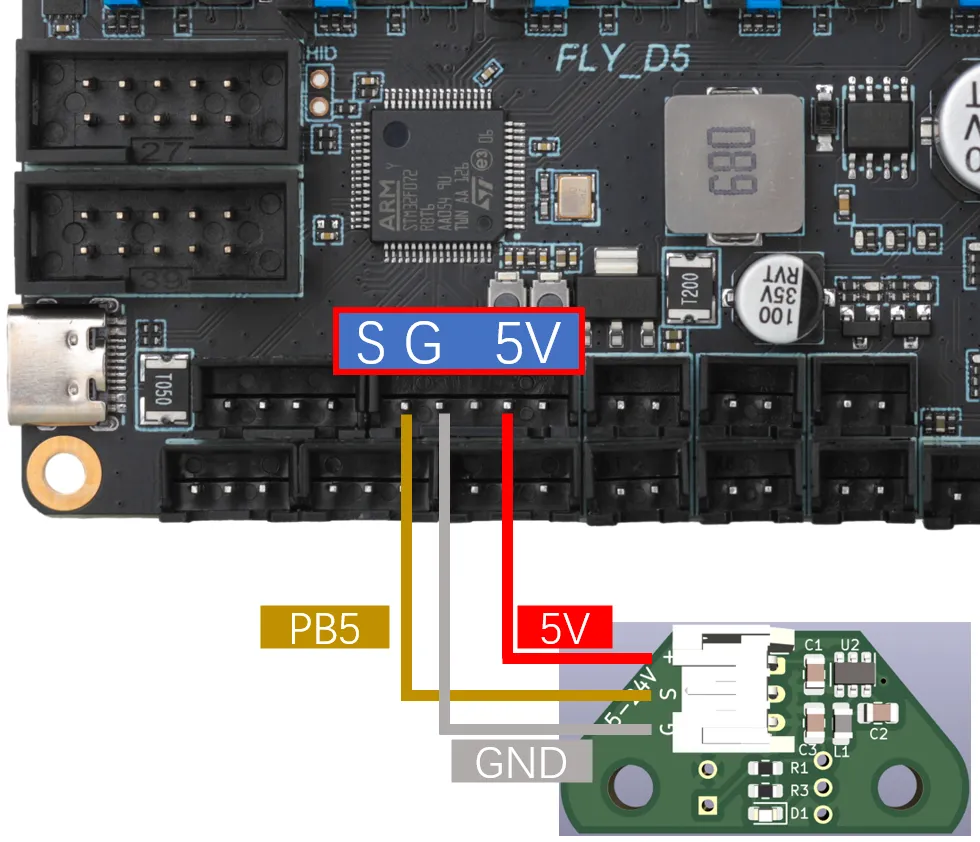
FLY-Mini12864 LCD Wiring
-
The wiring method for the FLY mini12864 is shown in the figure below. For screens from other manufacturers, please consult the respective manufacturer. If the Mini12864 screen is wired incorrectly, it may cause the host computer to fail to connect to the MCU. If the host computer could previously connect to the MCU via the mainboard but fails to connect after using the Mini12864 screen, try unplugging the Mini12864 wiring!!!
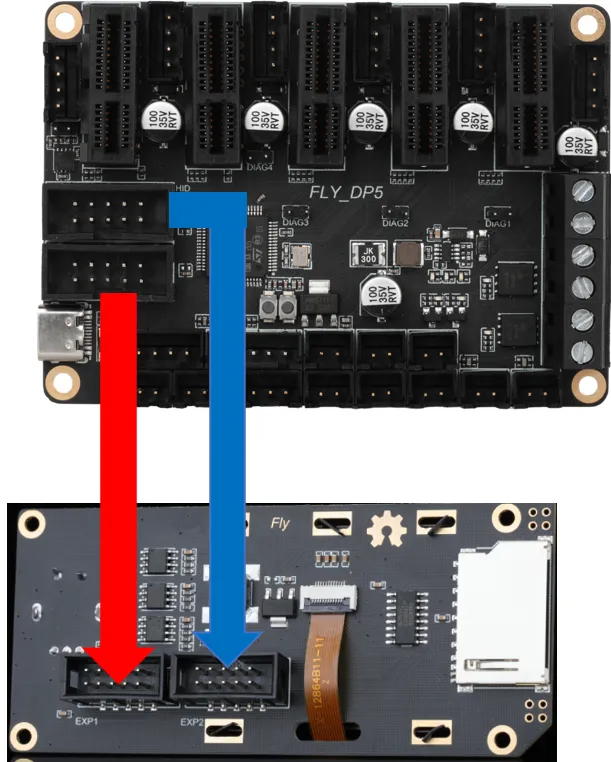
Connecting to Host Computer
-
The mainboard connects to the host computer's USB port via a Type-C interface, or it can also be connected through a serial port. Here, only the former is introduced.
